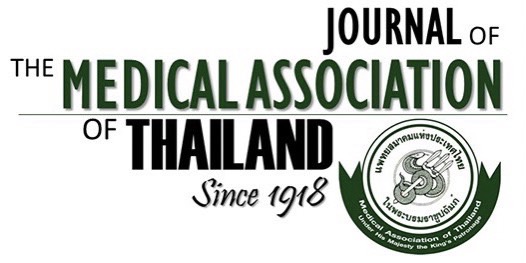The Study of Anterior Cruciate Ligament Footprint in Thai Population: A Human Cadaveric Study
Nattha Kulkamthorn MD*, Auttaphon Arkasihayuth MD*, Korakot Charakorn MD*, Manop Chaimut MD**, Nitis Reeboonlap MD*
Affiliation : * Department of Orthopaedic Surgery & Phramongkutklao Collage of Medicine, Phramongkutklao Army Hospital, Bangkok, Thailand ** Department of Anatomy, Phramongkulklao Collage of Medicine, Phramongkutklao Army Hospital, Bangkok, Thailand
Background : Identification of the anterior cruciate ligament (ACL) footprint is critical for an anatomical ACL reconstruction.
The osseous landmarks of the ACL footprint is one of the methods that can be used to determine the ACL insertion site. The
size of ACL footprint on femur and tibia are also important for surgical decision. The purposes of the present study represent
the existing of osseous landmarks and size of ACL footprint in Thai population.
Objective : Study the presence of the osseous landmarks and the size of ACL footprint both at femur and Tibia in Thai
population.
Material and Method: 77 knees from 39 cadavers (38 paired and 1 unpaired) from Department of Anatomy, Phramongkutklao
College of Medicine were dissected to identify bony landmarks of ACL at both tibia and femoral attachment. The resident’s
ridge and lateral bifurcate ridge were identified. The metallic markers were then inserted into the defined anatomic footprint
points and size of ACL footprint on tibia and femur were measured and recorded in length and width.
Results : The present study found resident’s ridge in 75/77 knees (97.40%) and lateral bifurcate ridge (bony landmark
between anteromedial and posterolateral bundle), 50/77 knees (64.94%).
The average ACL length and width at the femoral attachment were 12.01 + 1.66 mm and 9.52 + 1.37 mm
respectively. At the tibial attachment, the average length was 15.36 + 2.33 mm and the width was 11.03 + 1.77 mm. However,
when performed an analysis between male and female footprint, there were significant difference in length and width of both
Femoral and tibial attachment.
In male, the size of ACL at femoral attachment, average length was 12.68 + 1.48 mm and average width was 9.99
+ 1.38 mm. At tibial attachment, average length was 16.84 + 1.07 mm and width was 11.32 + 1.43 mm.
In female, the size of ACL at right femur attachment, average length and width were 10.68 + 1.1 mm, 8.64 + 0.79
mm respectively. At tibial attachment, average length and width were 12.48 + 1.08 mm and 10.1 + 0.96 mm respectively.
Conclusion : In femoral footprints of the ACL, the lateral bifurcate ridge can be found in 64.94% and resident’s ridge can be
found in 97.40% of the specimens. Then the authors can use the resident’s ridge as a primary osseous landmark for anatomic
ACL surgery in Thai patients, then locate the center of femoral tunnel at the lateral bifurcate ridge later in case of the authors
could identify them. Gender has an effect on both femoral and tibial footprint size. The average size of ACL tibial footprint
among Thai female are smaller than 14 mm, then the single anatomical ACL reconstruction may be preferred than double
bundle technique. On the other hand, the average size of ACL femoral footprint in Thai male is greater than 14 mm. These
findings alert the surgeon that double bundle technique could be performed in Thai male patients.
Keywords : Anterior cruciate ligament, ACL footprint, Resident’s ridge



